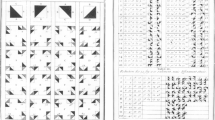Abstract
This paper describes a three-dimensional surface-construction process designed for the analysis of image sequences. Named the Weaving Wall, the process operates over images as they arrive from a sensor, knitting together, along a parallel frontier, connected descriptions of images as they evolve over time. Although the Weaving Wall was developed to support a tracking mechanism for recovering the three-dimensional structure of a scene being traversed, other applications of the surface-building process have since become apparent. These include rendering and computation on tomographic medical data, display of higher-dimensional analytic functions, edge detection on the scale-space surface, and display and analysis of material fracture data. More generally, the Weaving Wall may be of use in representing the evolution of any two-dimensional imagery varying in a nearly continuous manner along a third dimension. We are currently looking into extending the processing to higher dimensions.
Similar content being viewed by others
References
R.C. Bolles, H.H. Baker, and D.H. Marimont, “Epipolar-plane image analysis: An approach to determining structure from motion”, Intern. J. Computer Vision 1:7–55. June 1987.
H.H. Baker and R.C. Bolles, “Generalizing epipolar-plane image analysis on the spatiotemporal surface”, Intern. J. Computer Vision, (this issue), December 1988.
E. Artzy, G. Frieder, G.T. Herman, “The Theory, design, implementation, and evaluation of a three-dimensional surface detection algorithm”, Computer Graphics and Image Processing 15:1–24, January 1981.
G. Wyvill, C. McPheeters, and B. Wyvill, “Data structure for soft objects”, Visual Computer 2:227–234, 1986.
P.T. Sander and S.W. Zucker, “Tracing surfaces for surfacing traces”, 1st Intern. Conf. Computer Vision, London, pp. 241–249, June 1987.
S.W. Zucker and R.A. Hummel, “A three-dimensional edge operator”, IEEE Trans. PAMI 3:324–331, May 1981.
D.H. Marimont, “Segmentation in Acronym”, Proc. DARPA Image Understanding Workshop, Stanford, CA, pp. 223–229, Deptember 1982.
W.E. Lorensen and H.E. Cline, “Marching Cubes: A high resolution 3D surface construction algorithm”, Computer Graphics 21: 163–169, July 1987.
J. Canny, “A computational approach to edge detection”, IEEE Trans. PAMI 8:679–698, November 1986.
A. Huertas and G. Medioni, “Detection of intensity changes with subpixel accuracy using laplaciangaussian masks”, IEEE Trans. PAMI 8:651–664, September 1986.
“Pixar unveils new entry-level image computer”, Datamation, pp. 85–88, February 1988.
S.M. Goldwasser and R.A. Reynolds, “Real-time display and manipulation of 3-D medical objects: The voxel processor architecture”, Computer Vision, Graphics, and Image Processing 39:1–27, July 1987.
A.P. Witkin, “Scale space filtering”, Proc. 8th Intern. Joint Conf. Artif. Intell. Karlsruhe, West Germany, pp. 1019–1021, August 1983.
A.P. Pentland, “Perceptual organization and the representation of natural form”, Artificial Intelligence, 28:293–331, 1986.
A.J. Hanson, “Hyperquadrics: Smoothly deformable shapes with convex polyhedral bounds”, Computer Vision, Graphics, and Image Processing, 44:191–210, September 1988.
T.F. Banchoff, “Visualizing two-dimensional phenomena in four-dimensional space: A computer graphics approach”. In Statistical Image Processing and Computer Graphics, E. Wegman and D. Priest (ed.), Marcel Dekker, New York, 1986.
Author information
Authors and Affiliations
Rights and permissions
About this article
Cite this article
Baker, H.H. Building surfaces of evolution: The Weaving Wall. Int J Comput Vision 3, 51–71 (1989). https://doi.org/10.1007/BF00054838
Issue Date:
DOI: https://doi.org/10.1007/BF00054838




